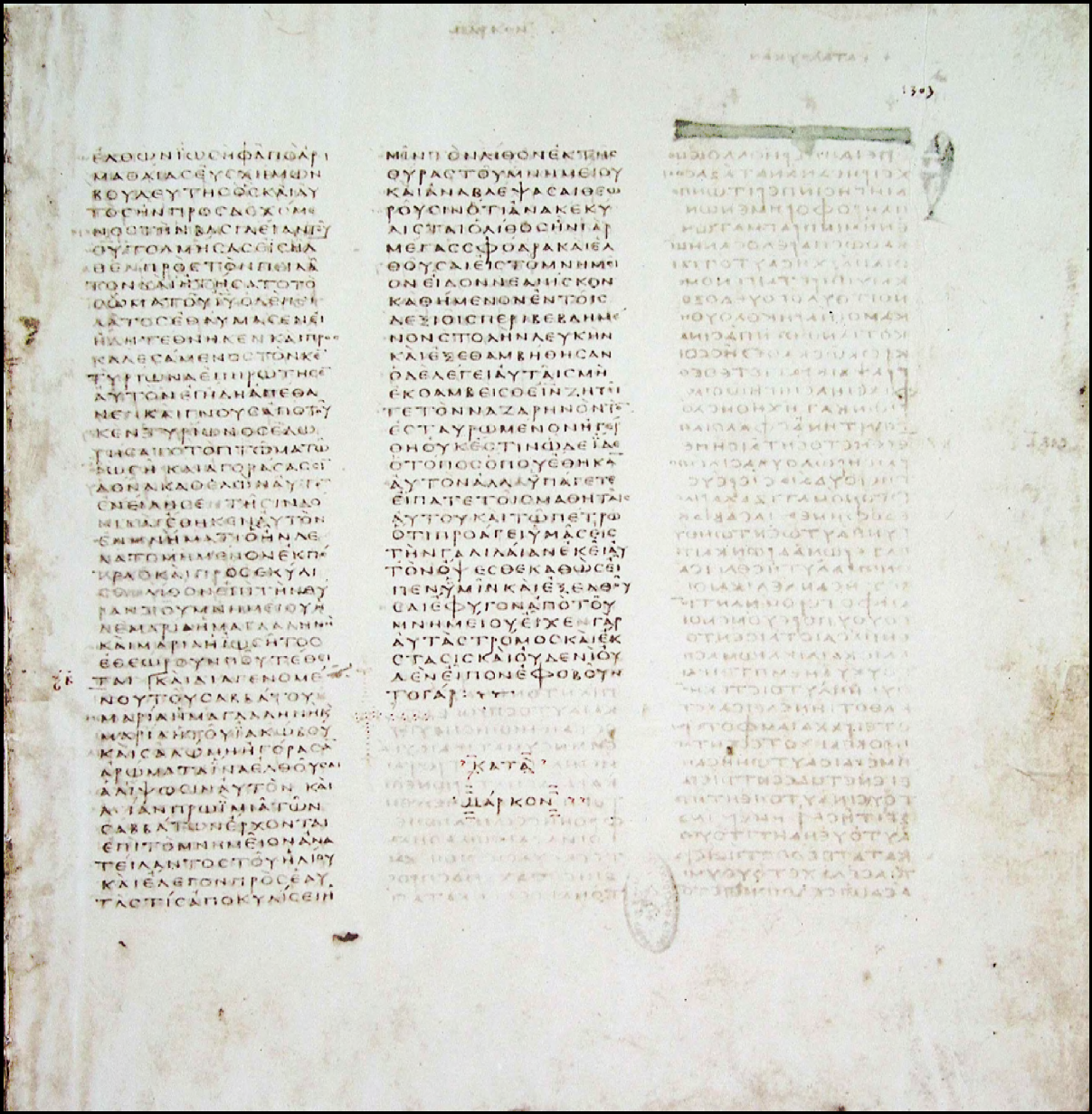- Jul 11, 2015
- 6,020
- 1,229
- 113
- Faith
- Christian
- Country
- United States
The peoples New Testament:
"Now when he had risen. The remainder of the chapter is not found in the Vatican or Siniatic Greek MSS., but is found in the Alexandrian. These are the three oldest and most reliable MSS. Some hold these verses to be a later addition, but as they are found in all the most ancient versions they must have been a part of Mark's Gospel when the first century ended. Schaff, Plumptre, Olshausen, Lochman and others regard them genuine, while other critics consider them doubtful. A circumstance in their favor is that the Vatican MS. has a vacant space for them. It seems probable that in an early copy, therefore, they were omitted for some cause by a copyist who left space for them, but did not afterwards fill it, and that the Siniatic MS. was made from the mutilated copy. It is clear that Mar_16:8 was not designed to conclude Mark's narrative."
Scofield:
"The passage from verse 9 (Mar_16:9) to the end is not found in the two most ancient manuscripts, the Sinaitic and Vatican, and others have it with partial omissions and variations. But it is quoted by Irenaeus and Hippolytus in the second or third century."
You can search for other places that will confirm these things.
This whole "it's not in the oldest manuscripts" is not true. It is in the oldest manuscripts and in the case of the Codex Vaticanus the space is there for the text but for some reason it was not written in. The Catholic church was up to no good here IMO.
The long ending is the valid ending.
"Now when he had risen. The remainder of the chapter is not found in the Vatican or Siniatic Greek MSS., but is found in the Alexandrian. These are the three oldest and most reliable MSS. Some hold these verses to be a later addition, but as they are found in all the most ancient versions they must have been a part of Mark's Gospel when the first century ended. Schaff, Plumptre, Olshausen, Lochman and others regard them genuine, while other critics consider them doubtful. A circumstance in their favor is that the Vatican MS. has a vacant space for them. It seems probable that in an early copy, therefore, they were omitted for some cause by a copyist who left space for them, but did not afterwards fill it, and that the Siniatic MS. was made from the mutilated copy. It is clear that Mar_16:8 was not designed to conclude Mark's narrative."
Scofield:
"The passage from verse 9 (Mar_16:9) to the end is not found in the two most ancient manuscripts, the Sinaitic and Vatican, and others have it with partial omissions and variations. But it is quoted by Irenaeus and Hippolytus in the second or third century."
You can search for other places that will confirm these things.
This whole "it's not in the oldest manuscripts" is not true. It is in the oldest manuscripts and in the case of the Codex Vaticanus the space is there for the text but for some reason it was not written in. The Catholic church was up to no good here IMO.
The long ending is the valid ending.


